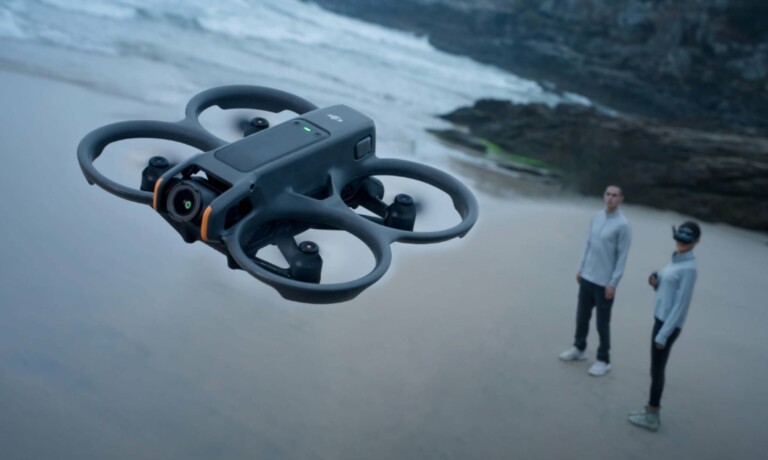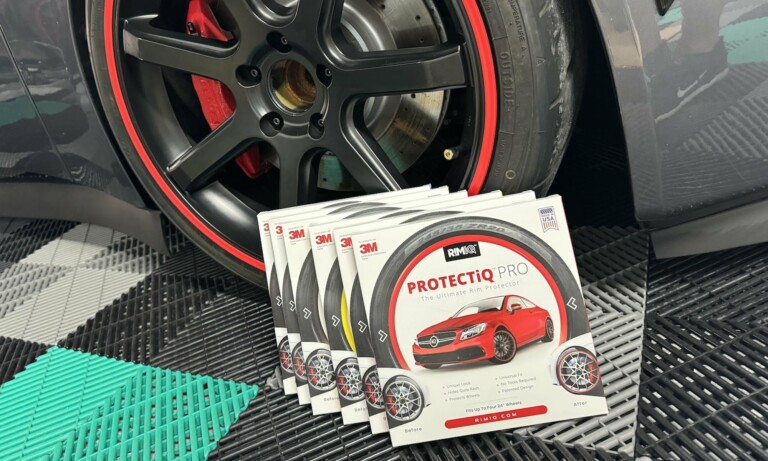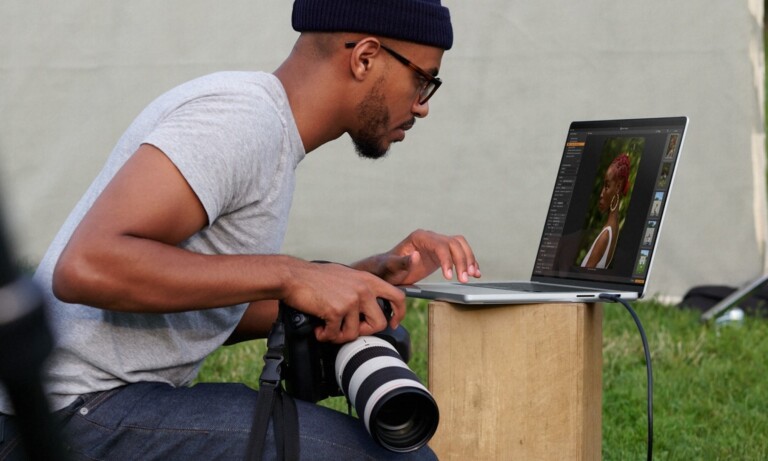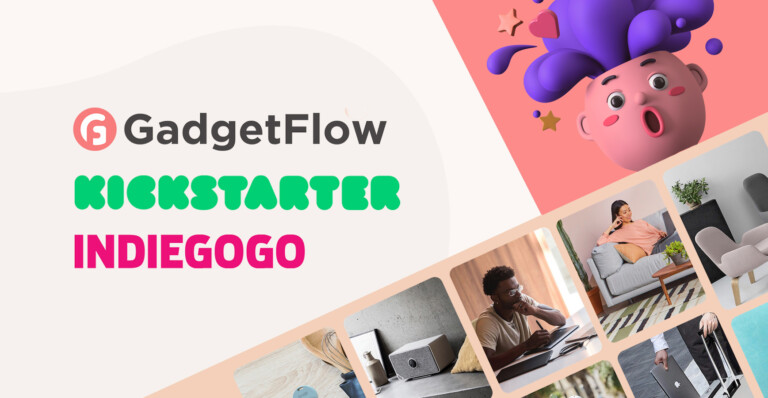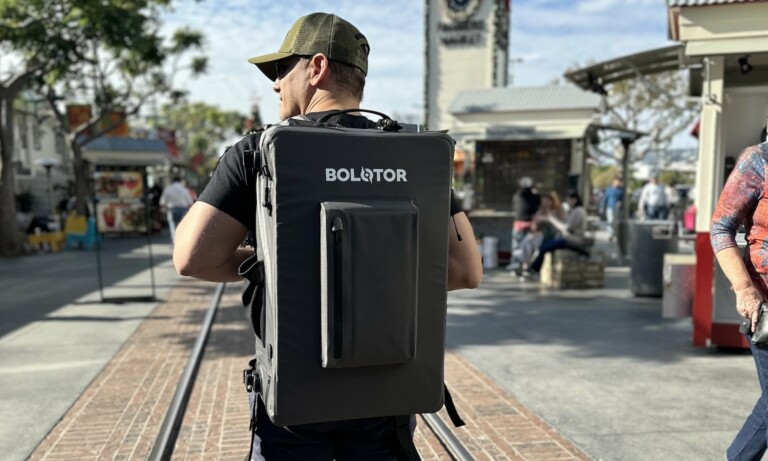Gadget Flow Podcast Episode 10 – Giles Dawe from Hyperstarter
On this week's podcast we sat down with Giles Dawe from Hyperstarter and talked about entrepreneurship, crowdfunding, and fine art.

- Hyperstarter is an online tool that helps you analyze the structure of your Kickstarter page and gives you tips to improve.
- You can find more information as well as contact Giles Dawe through his LinkedIn profile.
How long have you been painting for?
Giles: I’ve been painting for years, I’ve been painting since I was 16 at school and I took it further and did a degree, and I actually did my fine art degree in France and that’s a bit different. I just took it forward really, I went over to Hong Kong (I can talk about my web background), I went over to Hong Kong and I was doing fulltime painting there, I did some artwork for a guy called Wong Kar-wai which is like a famous award-winning Hong Kong film director. He said he put some of my paintings in his film, one of his recent films, but that was a long time ago, I’m not sure where or if you catch a glimpse of it somewhere, but my work is quite surreal I guess. I was doing that for a while as a full-time job.
Talking about art and entrepreneurship – how do they intertwine?
Giles: I can use the skills and the creativity and place it into crowdfunding. You trying to market yourself and promote yourself. You’re thinking of visuals, things people check on their phones and they want to see things straight away, so I look at that sort of aspect as well. All my background can be used in the current work that I’m doing, so yeah this is good.
How did you transition from art to running a crowdfunding business?
Giles: The journey started after I finished my art degree because I realized it was so hard to get a job doing painting; you have to be really famous or dead actually to sell your artwork. So it was around 1999, around that time that year web was taking off, I thought “this is quite interesting,” I learned it within a couple of months and I ended up working for a local newspaper, which is connected to Daily Mail Group, it’s quite a big publishing group, Daily Mail. I worked there for a while, did their websites, and then went on to do websites for government within England. That went quite well, but I felt at the time a nagging urge to just do more, they weren’t as fast as what I liked them to do, and they were saying “it doesn’t matter about how much you’re spending, just keep on going.” I wasn’t interested in that and I thought “let’s do something different,” and ended up going to Hong Kong and creating my own websites because at the time I thought “why am I doing, working for others, making sites for them?” I was actually doing my, full-time work with websites and painting, and it was great, it went really well. After that I transitioned from, you know Hong Kong is one of the most expensive places to live, I lived there for six years and I ended up going to China instead. It was better because I found it easier at the time, it was better for my son to go to a full-time education over there. China was an amazing experience and I was there for seven years; and I’m literally back into England now, back to where I came from, after all this travel. It’s good but how it diverts and how I found crowdfunding, things like that, is I had a gifts website and actually did some work for Evan from the Gadget Flow, he found me. I actually did a couple of months work on Gadget Flow. With my gifts site, I found that people contacted me, like Kickstarter campaigns, and I didn’t know much at the time so was turning them away and saying “I can’t help you; I need an actual live product, physical product I can sell on my site.” I was turning them away and I realized I was getting so many enquiries, I could do something with it and that’s how Hyperstarter came about.
What made you want to pursue the crowdfunding market?
Giles: The market itself; if we just focus on Kickstarter, which I think is the biggest crowdfunding platform. They’ve got some stats like over 300,000 campaigns, $3.3 billion raised, and about 160 campaigns a day, it’s huge. But, what I realized the failure of Kickstarter is that only 30% of all campaigns reach their minimum funding goal. And I thought this is a huge number that don’t actually reach their goal – what can I do to help them? So I built Hyperstarter, which is still free to use, it’s free to use, like a web analytics tool, we’re web-based. So you just run your Kickstarter URL and it spits out information of how you can improve your page. Why I focused on the campaign page itself is that I felt it’s the most important thing out of everything that you’re doing. Because your campaign page is basically your sales page, is the one where you get pledges coming in, all these different types of things, and you’re promoting yourself, it’s where the trust element comes in as well. It doesn’t matter where you’re driving traffic to if you’re using Facebook Ads and so on, it’s basically tied to your campaign page. How you’re putting the right message across, and if people can trust you, and that’s what I put the focus on in the work that I do and it has taken off from there.

Learn about the tricks of crowdfunding success from this podcast
Can you explain how Hyperstarter works?
Giles: It looks at a number of images that somehow takes from the page, and it just gives you, it looks at your social media, and it gives you advice on what you should do. It gives you a rating, a Hyperstarter rating on what you should be doing. What I find is that because it’s free to use, anyone can use it. I don’t ask for an e-mail address or sign up or any of that. You’re sort of putting your foot in the doorway and let people trust you, it’s all about trust, like I mentioned before, and they say “Wow, this guy is giving me something for free, what else can he do for me? What else can the Hyperstarter team do?” It’s just taken off, where then they go see our other page, where we can list them on our platform or we can do other things, which is the hands-on work, which has got the most traction I think, and that benefits the campaign owners more.
What is one of the key elements of having a successful crowdfunding campaign page?
Giles: There are quite a few elements, but I think is to actually explain exactly what the actual product does, and the benefits behind it; because what I like to do is, when I’m scrolling down the page you capture someone’s attention. It’s like when you’re speaking to someone or when you’re giving your 60 seconds pitches. You capture someone’s attention; and that’s just scrolling down the page, the campaign page itself, they understand more about what you’re doing. I want to see some nice images of people enjoying and using your product, I can imagine myself within that photo as well, using this product, and they’re sort of scrolling down, and they say “I see the technical features; I can use it with this, and this, and this! I see the specifications, yeah I can do that! I see the timeline when we are going to receive this sort of thing.” That’s the basics really; but to properly explain exactly what it has, and how it can benefit you as a backer, when you think of your customers, that’s probably the main key point really.
Do you think entrepreneurs that are new at this, sometimes underestimate themselves and assume someone else knows more about it than they actually do?
Giles: I think you are right. I think that you could just do a quick search on Kickstarter and Indiegogo and all the other platforms, and maybe find a similar product to yours already, and you’re sort of saying oh they did something like this. You need to sort of take a few steps back clearly, and analyze the benefits of it. I listened to one of the previous podcasts with Roy from Enventys, where he was saying that you actually need to provide something of value to people. For me, I just take another step further and make sure it’s not another novelty type product because those things fade quite quickly, it has to be something that benefits someone. That’s how I’d approach it.
How do you decide who you want to work with?
Giles: I try to work with most people, and I’m quite honest and approachable, I guess that’ll be the word to use. I’ll just give my feedback on it, maybe they’ve got something that isn’t ready now but later it could be. Ideally, when you’re working on a campaign, you should see that it worked for others in the past, which is a great way that we approach this hands-on work, and that we look at the competitors and you can see if you connect to them. Even the words that your competitors use when they were doing their pitches, whether you look at their press piece at some point of that. Then you should see if these guys raised x amount and they were featured on this site, or this writer wrote about them as well and let’s approach them in a similar way. But how we work on it; we need all these things ready, so you need your campaign page ready, you need your press materials ready, and it’s all sort of connected really as well, because you’re telling your story within your press kit. Then you’re sort of taking it further and using maybe those words on your campaign page as well, and then that’s also connected to the pitches where you’re taking a few sentences and using that within the direct pitches as well. It’s all sort of connected in a way. Also, social media is a great way to connect with people instantly and then try to follow up with e-mail afterwards.
What are the next steps after someone has their campaign page ready? How do you get people to see your page and successfully tell your story through e-mail and social media?
Giles: I’ve been looking at guys; I’ve been told by competitors but also look at my competitors as well so people, whether it’s agencies, the current guys like Command Partners, Funded Today, and I see how they talk and how they approach campaigns. They say look up friends, family and fools, and to look within your own network and see if you can capture their e-mails. Maybe you don’t know someone personally that could help you, or back you, or support you in a way, but maybe your friends, family, fools they can help you in a way, they might know someone. It’s a good way to look at who you’re connected with already, get everyone in the team involved. You can look at whether collecting e-mails or getting the word out that way. Hopefully you can back me on day one or even if you’re not interested in our product, donating a dollar would help within Kickstarter itself, just things like that and you going on further and taking it further to maybe running a competition to collect e-mails and get the word out or that type of thing.
What differentiates you from others who do the same? What makes Hyperstarter unique?
Giles: Our unique approach is that we’re really in touch with our customers and find out what they need, and what they want. Going from there, if you look at our competitors, even the other agencies that could be considered competitors to us, they find out their problems actually and we find out that they turn away something like 90% of their customers, which I think is huge. I think that we find that if they’re turning those guys away, then we can actually help those campaign owners to check their campaigns or work with us and develop. We’re not just after the huge campaigns. We actually want to work on the majority, but there’s certain ways to do it and that’s what we’re involved in.
It’s the same approach when I work on campaigns, we look at competitors. But if you also turn it around and look at our own competitors, they all realize they have a problem as well, and this is how we would approach it using our tool on our hands-on work, that’s an interesting thing to mention.
Do you have a small staff working alongside you?
Giles: Yeah, from China to the States. All over the place really. India.
As an entrepreneur what are your greatest challenges and the best parts of working with a team?
Giles: I have known these guys I’ve worked with for years. I’m just trying to imagine what it’s like to get someone new on board because they sort of know how I work and I know how they work. I think the challenge is, sticking to it isn’t it, because we are all working at home, we’re home-based and it’s finding the challenge is actually concentration and sitting down. It’s so easy when you’re based at home to look somewhere else or just go out for a few hours and come back, and not concentrating on exactly what you’re doing. It’s really hard actually because if people were working from home they’ll realize that you do need to stick it out and change your scenery sometimes or work in a café which is what I was doing in China as well. I had to face it over there but I was going out just to try something new. It can be quite tough at times.
If you were talking to a new entrepreneur, what would you say it’s the most vital thing when working on a crowdfunding campaign? Other than having a great product.
Giles: Have a great product and would it sell? It’s such a huge thing. Maybe you could ask me another question I could come back to it because I’m not actually sure how to answer that because it’s quite an open question.
Instead of one thing that’s most important, where do they need to start from?
Giles: Of course you research, that’s what I mentioned before, by looking what others have done and if you can follow their path. If you’ve got a product, you type it in on Kickstarter and realize that none of those guys have been successful in what they’ve done, and none of them reached their goal, and you’re thinking “I’m creating something similar and there is no traction, there’s no interest, what can I do?” It’s not they haven’t got a great product, maybe this guys marketed it in a different way or something like this. I was actually part of Entrepreneurial Spark within Bristol. They got all different types of countries all over the UK, and it’s great because you see different entrepreneurs of different stages and I was in the upper stage. I’ve seen that the guys, someone’s got a social media agency, or someone’s got a running type product, and we were all together and talking to each other about the challenges. We were also facing the same sort of issues, which is making sales. That’s is the most important thing and I guess as an entrepreneur, you need to be like a salesperson, you need to just get your message out there and get the word out and just constantly be promoting yourself. I’m lucky in that Hyperstarter gets a lot of this traffic from word of mouth, or recommendations, and all natural types of things. I haven’t done any paid ads or proper promotion, and in that sort of way, it’s going well. I do need to do that because that’s the advice I give to others, but it’s going well for us. That’s what I would take out of it.
Where can people find you online?
Giles: Go to hyperstarter.com, check the site, see what we’re doing and feel free to get in touch. We reply to every e-mail.
For more such interesting podcasts on crowdfunding, marketing, product placement, and everything in between, subscribe to the Gadget Flow podcast now.


